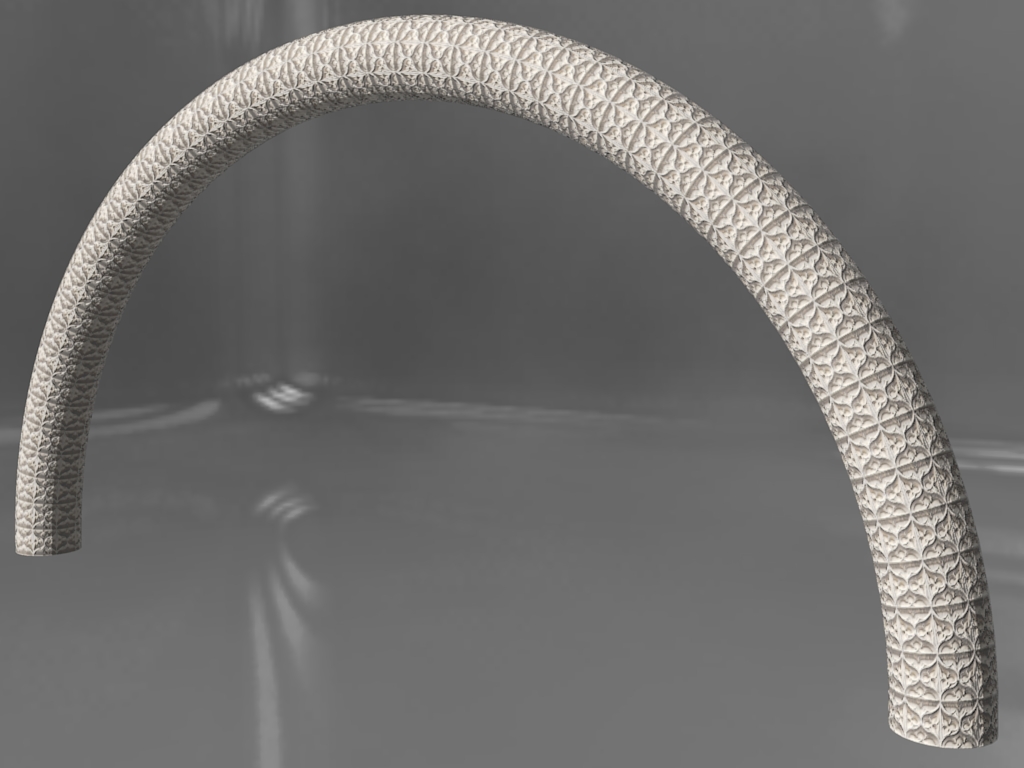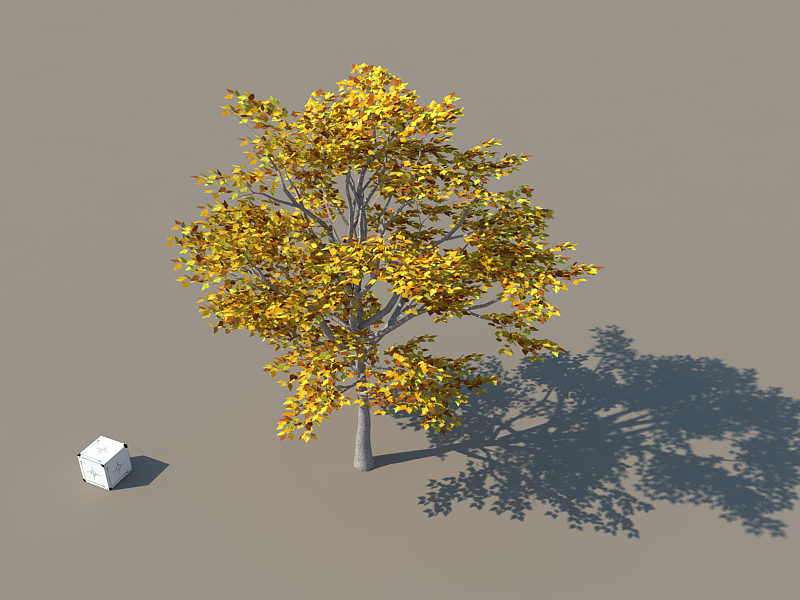[Plugin] UV Toolkit
-
Sorry typo I meant to say Thomthom's Library.
Oh the shame!
-
That'll be ten Hail Marys.
-
Hi Thom,
(I could not resist - what a brilliant plugin!)



Here is an arch I made in this way:

-
That's pretty cool
-
Nice one.
I have an update coming soon, 2.2. It allows you to map a set of quad-faces, copy the mapping to the UV clipboard and when you then select a set of other quadfaces and paste they are randomly applied UV mapping from the clipboard set.Makes it easy to apply a set of variations. Tried it on a geometree from FormFonts:

One can make quite efficient mapping if you use sprite techniques - one material, with a texture containing all the variations.
-
That will be interesting. Can hardly wait!

-
Can you explain more about 'sprite technique'? Never heard of it but I'm thinking it's a texture FontSync a range of similar hues?
-
@unknownuser said:
Can you explain more about 'sprite technique'? Never heard of it but I'm thinking it's a texture FontSync a range of similar hues?
You just combine multiple textures into one. Then apply just part of the texture to different faces. That way you have one material that serves multiple purposes.
-
FontSync? What was i typing?
That meant to say 'containing'...

I'm still lost, your plugin can combine the numerous textures or this is done by the user externally?
-
@unknownuser said:
I'm still lost, your plugin can combine the numerous textures
No - the user makes a texture.
In the case of the tree, combine some textures of leaves into one texture. Apply these variations to a set of faces. Copy their UV to the UV clipboard. Select the remaining untextured leaves and paste the UVs.That makes it very easy to manage your materials. For instance, you could then you edit the one texture to a different set of variations and all the leaves will be updated on one operation.
As for gaieus' example he could make a texture with a set of variations of bricks.
I'll be making a video with a quick example when v2.2 is done.
-
Thomas (plugin monkey!)
What a great addition mate! I can think of a great way this will assist workflow in my case - as you mentioned 'sprite technique' I've never heard it termed that! But already use this for mapping all my furniture, fittings, carpet, tiles, wall and ceiling colours, light fittings etc for internals on exterior renders - all to the one map so that I clear about 20 materials out of my material browser and have just one material in maxwell.
This plugin will help to spread these over randomly inserted objects! WOW!
You are a god!
-
Thanks Thom for this nice plugin!

-
@thomthom said:
I'll be making a video with a quick example when v2.2 is done.
Just leave that for Rich (once he finally understands the plugin).

-
I'm in constant awe of you and all the other generous Ruby contributors. Your work has taken SketchUp to another level. Many Thanks.
-
-
-
@unknownuser said:
@gaieus said:
@thomthom said:
I'll be making a video with a quick example when v2.2 is done.
Just leave that for Rich (once he finally understands the plugin).

How about i post that video of you in BaseCamp surrounded by an enthralled audience!
I'd like to see that, I saw some of Mateo's facebook images and would love to see MORE!!!!
-
Mate I played around with the plugin for a tree trunk in combination with fredoscale and I ended up with a mass of assigned materials (all the same) when exported to maxwell. I noted this before with Whaat's UV tools (cant remember the name of the plugin).
Funny though it was only for several faces - I'll have to test some more and see what went on there!
Mate dragged over from Whaat's UV tools thread!
@unknownuser said:
ThomThom I'm not entirely sure, but I'm guessing the Maxwell exporter exported out a texture for each face with a distorted texture.
Mate I think it well could be that as only a few faces effected it would be likely these subdivided during editing.
BTW starting a new thread for you to check out regarding a workaround for locating HDRI worked out how to do it in SU and you might be able to automate it a little.
-
Richard,
Indeed UV Toolkit 2 only works properly if the number/shape of the initial faces is the same as those of the end result.
If during a distortion operation faces get subdivided further, it fails. You can pre-triangulate your faces first if needed however.
I found that after I manipulated my mesh, it rendered properly in Twilight and Thea (neither of which "likes" distorted textures AFAIK) so I thought the plugin fixes texture distortion.
-
@gaieus said:
Richard,
Indeed UV Toolkit 2 only works properly if the number/shape of the initial faces is the same as those of the end result.
If during a distortion operation faces get subdivided further, it fails. You can pre-triangulate your faces first if needed however.
I found that after I manipulated my mesh, it rendered properly in Twilight and Thea (neither of which "likes" distorted textures AFAIK) so I thought the plugin fixes texture distortion.
You mean when using UV Memory?
That doesn't fix anything - in fact, it doesn't reapply distorted textures to triangles, they end up as skewed textures. Though, if you have a dense triangulated mesh you probably don't see the artefacts.
Advertisement








